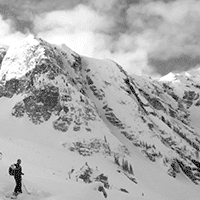


SITE LOGIN
-
REVIEWS
- Ski Gear
- Clothing
- Accessories
- Summer Gear
- Lifestyle
- Lodges and Accommodation
- Nutrition
- Manufacturers
- Destinations
- Training
- Gear of the Year
- Best New Summer Gear
-
Holiday Gift Guide
-
Holiday Gift Guide 2024
- Holiday Gift Guide 2024 Base Layers
- MSR Explore Revo Snowshoes
- Fieldsheer Backcountry Heated Jacket
- Fieldsheer Premium 2.0 Merino Heated Socks
- MEC Hut Booties and Slippers
- Arc’teryx Kopec GTX Shoe
- Arc’teryx Kragg Insulated Approach Shoes
- Gregory Verte 18 Backpack
- Grundens Deck-Boss Ankle Boot
- MEC Northern Light Vest
- Montec-Scope-Ski-Goggles
- Mountain Hardware Kor Airshell Hoody
- Mountain Hardware Kor Alloy Crew
- Arcade Atlas Belt
- Dynafit Ridge Dynastretch Jacket
- Shokz OpenRun Pro 2 headphones
- Buff Merino Move Multifunctional Neckwear
- Bootdoc Foot Warmer
- Cotopaxi Allpa 42L Travel Pack
- DPS LastBag
- DPS PHANTOM Glide At-Home Kit
- DPS Mission Quiver Roller
- Dragon Amped sunglasses
- Dragon DX3 Plus OTG photochromic goggle
- Fuse Lenses Anclote Flashback
- Garmin Fenix 8 Solar Sapphire Watch
- Gregory Alpaca Gear Tote 30
- Hotronic Boot Dryer
- MEC Aluminum Pot Set
- Gnara Go There Pants
- Grundens Shackleton 2.0 Duffel
- Jones Deeper 19L Backpack
- Le Bent Core Midweight Crew base layer
- Leatherman ARC
- Montane Nordes Hooded Softshell Jacket and Pants
- Helly Hansen Odin Everdown Hooded Jacket
- Helly Hansen Verglas Infinity Shell Jacket 2.0
- Montec Fawk Ski Jacket
- Pomoca Free Pro 2.0 Skins
- Rab Glaceon Pro Down Jacket
- Rab Khroma Converge GORE-TEX Ski Jacket & Pants
- Smith Squad MAG Goggles
- Stellar Guide Aerogel Hybrid Hood 2.0
- Stellar Ultralight Down Hood 2.0
- Arms of Andes Alpaca Half Zip & Wool Leggings
- Cotopaxi Allpa 70L Duffel Bag
- Giro Taggert Mips Helmet
- Loonr Hi Flyer Boots
- Paka Mountain Crew
- Roll Recovery SUPERPLUSH Classic Shoes
- Smartwool Smartloft Hooded Jacket and Pants
- Ortovox Switchback 32 Ski Touring Backpack
- Cotopaxi Allpa X 3L Hip Pack
- Giro Sagen Ski Goggle
- Icebreaker Ski+ Over the Calf Socks
- MEC-Fireside-Fleece-Snap-Pullover
- Montec Roast Mittens
- Mountain-Hardware-Sunblocker-Hoody
- MSR Titan Kettle 900 ml
- Tailgate-Industries-The Gondom-Goggle-Cover
- Wild Country Rope Tarp
- Bootdoc Race Merino PFI 50 Socks
- Remind Soles Destin Impact Insoles
- Kari Traa Rose Baselayer Half Zip Top and Pants
- Le Bent Midweight Quarter Zip
- Ombraz Dolomite Sunglasses
- Ortovox Fleece Rib Hoody
- Ortovox Merino Thermovent Base Layer
- Smartwool Intraknit Merino Tech Half Zip
- Suunto Wing Bone Conduction headphones
- Sweet Protection Adapter Mips Helmet
- Sweet Protection Connor Rig Reflect Goggles
- Zeal Optics Selkirk Glacier Glasses
- Norrona more flex1 Pants
- Norrona Octa Zip Hood
- Norrona Lyngen Alpha100 Zip Hood
- MEC Deluxe Pillow
- Holiday Gift Guide 2023
- Holiday Gift Guide 2022
- Holiday Gift Guide 2021
- Holiday Gift Guide 2020
- Holiday Gift Guide 2019
- Holiday Gift Guide 2018
- Holiday Gift Guide 2017
- Holiday Gift Guide 2016
-
Holiday Gift Guide 2024
- Pro Skier Interviews
- NEWS
- STORE
- ROUTES
- LODGING
-
VIDEOS
- 2022/23 Gear Reviews
- 2021/22 Gear Reviews
- 2020/21 Gear Reviews
- 2019/20 Gear Reviews
- 2018/19 Gear Reviews
- 2017/18 Gear Reviews
- 2016/17 Gear Reviews
- 2015/16 Gear Reviews
- 2014/15 Gear Reviews
- 2013/14 Gear Reviews
- 2012/13 Gear Reviews
- 2011/12 Gear Reviews
- 2020 Outdoor Retailer
- 2019 Outdoor Retailer
- 2018 Outdoor Retailer
- 2017 Outdoor Presscamp
- 2017 Outdoor Retailer
- 2016 Outdoor Presscamp
- 2016 Outdoor Retailer
- 2015 SIA Show
- 2014 Outdoor Retailer
- 2013 SIA Show
- 2012 Outdoor Retailer
- Tips and Tricks
- Backcountry Skiing
- SAFETY
- ABOUT
- REVIEWS
- NEWS
- STORE
- ROUTES
- LODGING
-
VIDEOS
- 2022/23 Gear Reviews
- 2021/22 Gear Reviews
- 2020/21 Gear Reviews
- 2019/20 Gear Reviews
- 2018/19 Gear Reviews
- 2017/18 Gear Reviews
- 2016/17 Gear Reviews
- 2015/16 Gear Reviews
- 2014/15 Gear Reviews
- 2013/14 Gear Reviews
- 2012/13 Gear Reviews
- 2011/12 Gear Reviews
- 2020 Outdoor Retailer
- 2019 Outdoor Retailer
- 2018 Outdoor Retailer
- 2017 Outdoor Presscamp
- 2017 Outdoor Retailer
- 2016 Outdoor Presscamp
- 2016 Outdoor Retailer
- 2015 SIA Show
- 2014 Outdoor Retailer
- 2013 SIA Show
- 2012 Outdoor Retailer
- Tips and Tricks
- Backcountry Skiing
- SAFETY
- ABOUT
TOP VIDEOS
The Unsung Hero of Mountain Adventures: Why Layering is Your Most Important Piece of Gear
 You’ve seen it before. You start a hike under a brilliant blue sky, the sun warming your face. But as you gain elevation, the wind picks up, clouds roll in, and suddenly, you’re in the middle of a downpour, or even a summer snow squall. This is the quintessential mountain experience, and it underscores a fundamental truth for any hiker, from the greenest novice to the seasoned trailblazer: the weather is wildly unpredictable. Your best defence? A smart layering system.
You’ve seen it before. You start a hike under a brilliant blue sky, the sun warming your face. But as you gain elevation, the wind picks up, clouds roll in, and suddenly, you’re in the middle of a downpour, or even a summer snow squall. This is the quintessential mountain experience, and it underscores a fundamental truth for any hiker, from the greenest novice to the seasoned trailblazer: the weather is wildly unpredictable. Your best defence? A smart layering system.
More Than Just Clothes: Your Personal Climate Control
At its core, layering is about creating a personal microclimate that you can adjust on the fly. It’s a three-part system, each with a specific job:
-
The Base Layer: The Moisture Manager: This is the layer worn next to your skin. Its primary role is to wick sweat away from your body, keeping you dry. A wet base layer, especially in cool or windy conditions, will chill you to the bone, no matter what else you’re wearing.
-
The Mid-Layer: The Insulator: This is your warmth layer. Its job is to trap the heat your body generates. The thickness and material of your mid-layer will depend on the conditions, but its effectiveness is drastically reduced if your base layer is soaked.
-
The Outer Layer: The Weather Shield: This is your protection from the elements. A good outer layer, or shell, will be windproof and waterproof, keeping the rain, snow, and biting winds at bay.
The beauty of this system is its versatility. As you heat up on a steep ascent, you can shed your mid-layer. When the wind howls on a ridge, you can throw on your shell. It’s a simple yet highly effective way to stay comfortable and safe in the ever-changing mountain environment.
From Itchy to Incredible: The Evolution of Hiking Fabrics
Not so long ago, mountain attire was a far cry from the sleek, high-performance gear we have today. Early hikers and mountaineers relied on heavy, itchy wool and canvas to shield them from the elements. While these materials were durable, they were also bulky, heavy, and took forever to dry.
The mid-20th century saw the dawn of a new era with the invention of synthetic fabrics like nylon and polyester. These materials were lighter, more durable, and dried much faster than their natural-fiber predecessors. The real game-changer, however, was the introduction of waterproof-breathable membranes like Gore-Tex in the 1970s. For the first time, hikers could have a jacket that kept the rain out without trapping sweat in.
This spirit of innovation continues today, with remarkable advancements in every layer of the system:
-
Base Layers: Natural vs. Synthetic: We've moved from moisture-trapping cotton (a big no-no for hiking) to a fantastic array of options. Modern synthetics excel at wicking and are very durable. Alongside them, natural fibers have made a huge comeback, led by merino wool. Unlike the wool of the past, merino is incredibly fine and soft. It’s a temperature-regulating powerhouse that provides warmth even when wet and is naturally resistant to odor-causing bacteria. Another excellent natural fiber gaining popularity is alpaca wool. Hailing from the high Andes, alpaca fibers are semi-hollow, making them exceptionally warm for their weight and giving them a soft, silky feel. Alpaca is also very durable and, because it lacks lanolin, is considered hypoallergenic.
-
The Best of Both Worlds: Blended Fabrics: The latest advancement isn't just about one fiber being better than another; it's about combining them. Manufacturers now skillfully blend natural and synthetic fibers to create fabrics that offer the best of both worlds. A common example is a merino-nylon blend. This combination takes the natural odor resistance and comfort of merino and adds the durability and quick-drying properties of nylon. This addresses a key weakness of pure merino, which can be susceptible to abrasion from pack straps. These intelligent blends mean you get a base layer that’s comfortable, stink-free, fast-drying, and tough enough for the rigors of the trail.
-
Mid-Layers: Fleece, once the go-to insulator, has been joined by incredibly lightweight and compressible down and synthetic "puffy" jackets. These provide an amazing amount of warmth for their weight and pack down to almost nothing in your backpack.
-
Outer Layers: Modern shell jackets are lighter, more breathable, and more durable than ever. They are designed with features like pit zips for ventilation, adjustable hoods to fit over helmets, and strategically placed pockets that are accessible even when wearing a backpack.
Building Your Layering System: A Guide for Every Hiker
For those new to hiking, the sheer number of options can be overwhelming. But building an effective layering system doesn't have to be complicated. Here's a simple guide to get you started:
-
Start with a good base layer: Invest in a quality merino wool, alpaca, synthetic, or blended long-sleeved shirt. This is the foundation of your system.
-
Add a versatile mid-layer: A lightweight fleece or a "puffy" jacket with synthetic insulation is a great all-around choice. They provide warmth even when damp and are more affordable than down.
-
Get a reliable outer shell: Your outer layer is your primary defense against the elements. Look for a waterproof-breathable jacket with sealed seams. This is a piece of gear worth investing in.
For intermediate hikers, it's about refining your system. You might have different weight base layers for different seasons, or both a fleece and a puffy jacket to choose from depending on the conditions. You'll also learn to fine-tune your temperature on the go, using zippers, cuffs, and even your hat and gloves to vent heat or trap it in.
The Takeaway
In the mountains, where the weather can turn on a dime, a well-thought-out layering system is more than just a convenience; it's a critical piece of safety equipment. It allows you to adapt, stay comfortable, and, most importantly, stay safe. So, before your next adventure, take a look at your layers. With the incredible advancements in fabrics and design, there has never been a better time to build a system that will keep you warm, dry, and ready for whatever the mountains throw at you.
Copyright © 2023-24 Backcountry Skiing Canada. All Rights Reserved.






